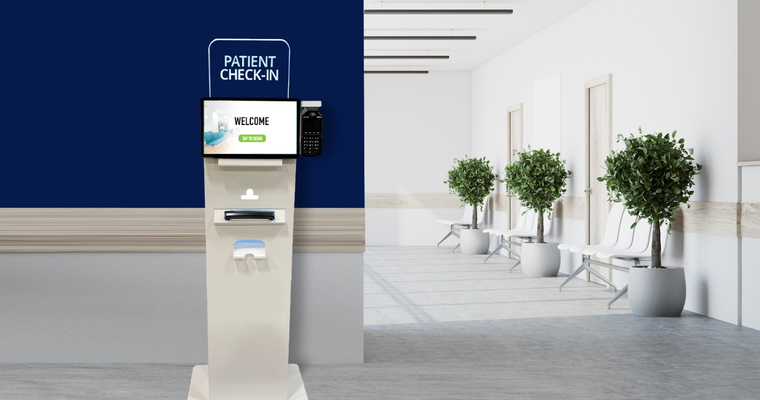
2022-06-06 14:08:34 2265
The pandemic had a massive impact on our healthcare system, exposing vulnerabilities in safety, staffing and operations. More than any other industry, the medical field had to adjust to keep frontline workers safe and systems functioning.
Because these strategies maintained efficiency and facilitated patient and employee health, many procedures have remained, even after the pandemic has waned. Emergent technology like healthcare kiosks will be especially important to care providers moving forward as the sector still deals with workforce shortages and increased safety measures.
Here, we detail how healthcare kiosks can help the medical field restructure patient check-in, keep staff protected from communicable diseases and offer easy telehealth options.
Healthcare kiosks streamline patient check-in
Simplifying processes continues to be an essential focus for the healthcare system. In the beginning of the pandemic, facilities relied on websites to distribute information and nurse lines to vet cases that needed to be seen immediately. These same types of efficiencies can now be carried out in waiting rooms as labor shortages affect reception staff.
Offering patient check-in kiosks gives people control over their own registration process. This ensures fewer errors in recorded personal information and provides an easy way to pay copays and bills at the kiosk. Streamlining these procedures frees front desk staff from data entry and allows them to focus on other tasks like scheduling or answering questions.
Delegating more control of the check-in process to the patient ensures hospital or clinic staff can concentrate on what's most important — providing top medical care.
Minimize human-to-human contact with medical kiosks
The spread of COVID-19 has spurred significant conversations about keeping public-facing employees safe in a variety of industries. This issue is especially vital in the healthcare industry where front desk staff check in potentially ill patients.
This greater awareness of human-to-human contact will live on with new measures to safeguard employees. Medical check-in kiosks can provide an important solution to the goal of maintaining proper social distance.
When patients check in at a healthcare kiosk, counter staff no longer risk exposure to germs from sick individuals. Additionally, kiosks are easily disinfected. Staff can clean the units, or kiosks can be outfitted with special attachments to hold sanitizing wipes or gel.
Expect a solid future for telemedicine kiosks
During the pandemic, as hospitals and clinics were concentrated on keeping non-emergent illnesses out of facilities to make room for critical cases, the use of telehealth options increased.
With that, people gained a greater comfort level using alternative healthcare methods to communicate with a physician. Expect to see more private locations like pharmacies, schools, box stores and large businesses utilizing telehealth kiosks outfitted with special tools to help doctors retrieve necessary information like body temperature and blood pressure. Not only is it convenient for patients, but the process often carries a lower price tag than a doctor visit.
Telemedicine healthcare kiosks can also provide convenience to places with immune compromised or elderly individuals like group homes and assisted living care facilities. These telehealth kiosks provide on-site care easily and efficiently, reducing the need to risk exposure at a clinic or make travel arrangements for seniors to visit the doctor.
The pandemic was a catalyst for innovative healthcare solutions to keep operations efficient while ensuring safety is a top priority. Today, we're seeing the continued benefits of these strategies with the popularity of technologies like patient check-in kiosks and telemedicine options.
Convenience, safety and experience will continue to influence patient expectations going forward.

